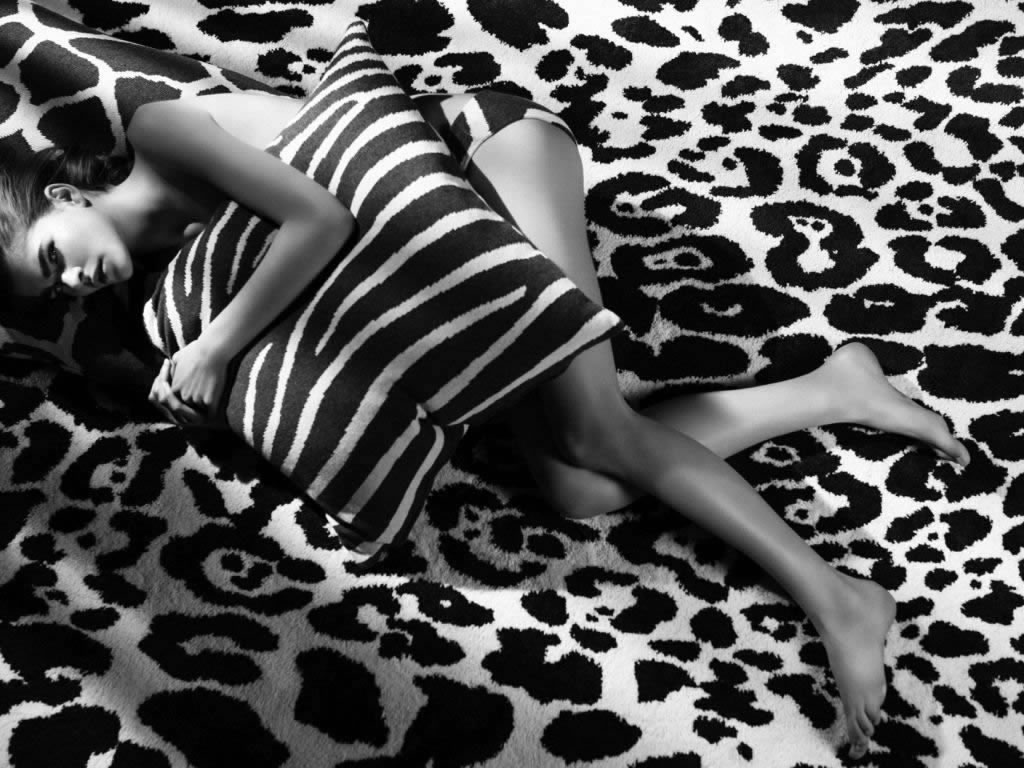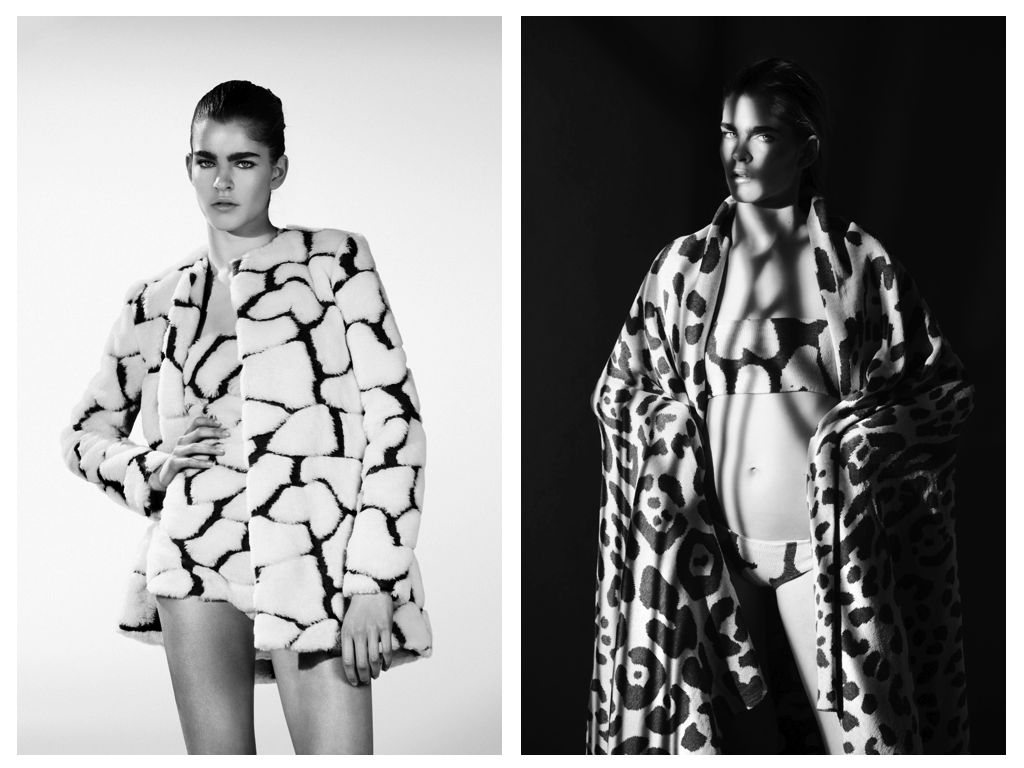Nanna van Blaaderen @ De Bijenkorf

The Campaign for Wool caught up with Dutch designer Nanna van Blaaderen in the lead up to Wool Week Amsterdam, to find out about her true love for Merino wool which, as we discover, is in her blood. During Wool Week Netherlands from November 3rd until 9th her latest collection will be on display at De Bijenkorf in The Hague.
Please tell us a little about yourselves and how your use wool in your designs?
I am a textile and fashion designer, specialising in manual as well as industrial knitting. The common denominator in my creations is wool, Merino wool specifically. I believe that up to 85% of my designs, fashion as well as interior, are made from Merino wool.
You specialize in knitwear. How did this come about?
It started because of a love for soft, stretch and wool cloth, woollen sweaters and cardigans, scarves, duvets, etc. During my university course in fashion design-forecast I participated in an extra-curricular course in machine knitting. It felt like everything fell into place; with this technique I could not only create soft, stretchable and beautiful fabrics in endless structures but also knit form-fitted fashion and interior products. Through the machine knitting course I also got a fascination with hand knitting – one thing lead to another.
I graduated with a complete hand and machine-knitted fashion forecast collection, predominately made from Merino wool (purely because I felt an affinity with the fibre). I also researched the great potential of knitting and knitwear and the future of knitwear for my thesis. This really set things in motion for me and I haven’t looked back. I started working with new techniques and researched wool and innovation. My portfolio grew and I started working for international clients such as Maison Martin Margiela.
Because of my collaboration with the ‘Textiel Museum’ in Tilburg (NL) and the knitwear industry I could continue my research into the interplay between the artisanal and modern techniques and industries which resulted into wonderful discoveries. And there are still so many things to achieve – the possibilities are countless.
At one point my portfolio grew so big that, thanks in part to me also developing a fabric that is an alternative to leather that was animal and environmentally friendly, I made the leap to setting up my own label in fashion and interior textiles.
What makes you choose wool over other fibres? What is your favourite thing about wool?
Wool has many beautiful qualities. My love for wool grew organically. My grandmother had a lot of knowledge of, and an affinity with, natural fibres such as wool and cashmere. Her sweaters and cardigans felt fantastic and remained endlessly beautiful.
(My grandfather was a big fan of skating on natural ice which led to him wearing very fine Merino base-layer shirts). And I loved the fine Merino wooIen sweaters that my grandfather used to wear during his expedition on natural ice. I ‘borrowed’ several of his sweaters throughout my childhood. They felt so lovely on my skin. My mother is a fabric designer and it was she who taught me the touch and feel and knowledge of the fibres. But more so I credit my grandma who had a keen eye for quality and durability. Subconsciously I was drawn towards woollen products.
My favourite thing about wool:
First of all, wool is a versatile and aesthetic fibre. Today, wool can be processed in many different ways because of modern techniques; however, wool in itself has a natural beauty to it.
In my experience, another beautiful quality of wool is the softness to skin, it feels as if it’s part of your own body (which it is in a way!) and makes you feel safe. This, in combination with wool’s temperature-regulating properties, makes wool such a pleasant fibre. And I could go on and on and on…
Can you tell us how you source your wool?
Most of the wool in my collection is from Australian Merino sheep, spun in Italy. When buying my yarns in Italy I pay attention to the country of origin and if possible the Woolmark quality assurance. The Woolmark certification gives an assurance of the quality of the wool and makes me feel safe. For my rugs I use New Zealand wool.
You design fashion garments as well as interior products. Is the use of wool different between these categories?
The wool I use for my rugs is slightly thicker, more structured and has a shorter staple length that is rougher than Merino wool and has a broader micron.
For all my other fashion and interior products I use the same Merino wool, although thickness of yarn may differ between cardigans and pillows. But the softness of Merino wool, in my fashion as well as interior design pieces, feels like a second skin.
Do you have favourite wool item?
My navy blue Merino wool jacket for inside and outside use.
What does the Campaign for Wool mean to you?
A lot actually, and I’m not just saying that to please The Woolmark Company! I sincerely believe that I wouldn’t be where I am now if I hadn’t got the support that I have from The Woolmark Company. For over four years I have been in regular and pleasant contact, with Ingrid Oomen. She has witnessed and supported my growth and that of my work and label from the very beginning. The support I have received from The Woolmark Company is hugely motivating and supporting to follow through and stay close to my mission, which is to create products that are high quality that exude elegance and offer a sense of security but are functional, natural and animal friendly at the same time.
What does 2015 hold for you?
In 2015 we aim to further our strategy by introducing our fashion and home collections to more and more clients, mainly on a national level but we would like to make our first steps on the international market as well. Another goal of ours is to continue with developing, refining and improving our high quality, elegant and environmentally friendly designs, specifically, my environmental alternatives for fur. I also hope to be of bigger significance for nature conservation and animal welfare with my collections and brand by working with environmentally friendly products, working with local producers and be able donate part of my turnover to nature preservation foundations.





